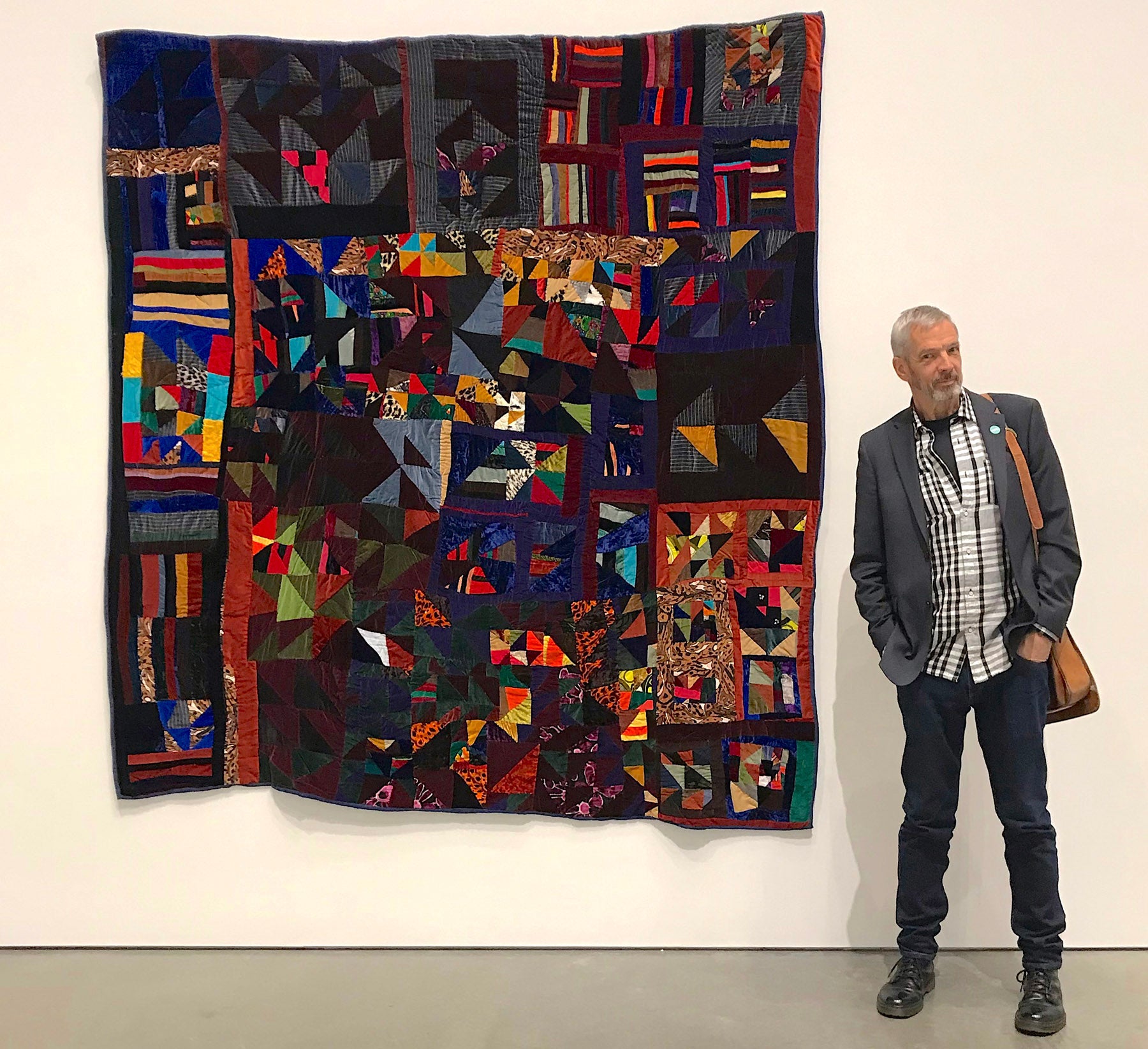By Joe Cunningham
SAN FRANCISCO When I started making quilts 40 years ago I learned that there were certain techniques, certain color combinations and certain ways of construction that together constituted “traditional” quiltmaking. The way I understood it was more or less as a set of rules to follow. My mentor, Mary Schafer, dismissed art quilts as a peculiar innovation that was devoid of interest because of their lack of technical rigor. She also dismissed those old quilts she called “utility” quilts, for similar reasons.
Below: In my studio, with my student Jackson Grantham, making masks.

Mary sometimes found quilts or quilt tops that were in her opinion “poorly pieced,” and took them home to disassemble and reassemble properly, with all points matching and all seams straight and neat. She was sure the original quilter would have done it that way “If she had the wherewithal.”
Now, Mary maintained an extreme example of this way of thinking about the tradition. But that has been and remains today the way that the idea of “traditional” is usually represented. And from the very beginning of my involvement with quilts, it seemed to me to be too narrow an understanding.
I think the conditions that created this understanding were mostly economic. That is, in the 1970’s, as this quilt movement was gathering steam, the quilts that were valued were naturally enough the “nice” quilts—the pretty ones in perfect condition that fetched the highest prices and were therefore prized. These quilts were the ones that were most widely published and shown.
As a network of contests grew, the fancy quilts were the ones that won the prizes and the ones that the judges deemed the “best.” The problem with that was the idea that there was a right and a wrong way to make a quilt—there was a way quilts should look and there were ways a quilt should not look.
As I continued to study and imitate old quilts, I started coming to another way of understanding the tradition. I began to see that American women of the 19th century who took up this fad of making quilts were not extending some idea of a tradition they received from their ancestors, they were creating a realm where any woman could sew anything together any way she wanted.
Below: At the Berkeley Art Museum with a quilt by the great Rosie Lee Tompkins. This is one of the kinds of quilts that has given me the idea I could be free in my work.

At a time when they were confined by law and custom, women could find in quiltmaking a way to be free of constraints. That was what led to what I think of as a Big Bang of creativity among American women of the time. Just think, around 1800, there were a few strategies and patterns for quiltmaking, but by the middle of the century there were thousands of patterns and an almost infinite number of ways of putting them together. The quilters of the 19th century were not creating a set of rules and guidelines, they were creating a realm where you could do anything you could conceive with fabric.
This is the way of thinking about the tradition that I choose to follow. I feel I can best honor the tradition by doing what those women did: following my own heart and making quilts that are true only to myself—not to someone else’s idea of what a quilt should look like or how it should be made. In this way I can go to quiltmaking to be free. In my life, that is the goal: to be free in my heart and mind, and to be true to my own way of being.
Below: Monument to Discarded Love, 72" x 72", 2019. A recent quilt made with cleaning rags from a printer friend, fabric from Ghana, commercial stripes and muslin.

Below: Under the Ice, 71" x 71", 2019. With handprinted fabric and striped yukata cotton.

Below: Crazy City: Flint, 78" x 78", 2016. Part of my ongoing Crazy City series. This quilt uses two yukata cottons.

To visit Joe’s website +click here









